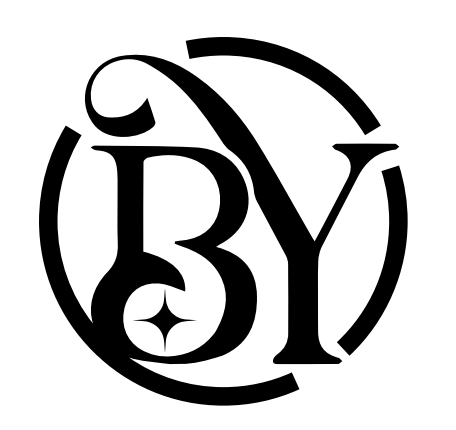Red Light Therapy
Red Light Therapy-What is Red Light Therapy?
Red Light Therapy (RLT), also known as Low-Level Laser Therapy (LLLT) or Photobiomodulation (PBM), is a therapeutic treatment that uses specific wavelengths of red and near-infrared (NIR) light to treat skin issues, muscle pain, and other medical conditions.
Unlike ultraviolet (UV) light which can damage skin, the red and NIR light used in RLT is non-thermal (doesn’t produce heat) and non-damaging. It works by delivering low-energy photons to the skin and cells, which are absorbed and trigger a biological response.
How Does It Work? (The Science Simplified)
The core mechanism is thought to be the absorption of light energy by a key component in our cells called cytochrome c oxidase, which is part of the mitochondria (the “powerhouse” of the cell).
Light Absorption: The mitochondria absorb the photons of red and NIR light.
Cellular Energy Boost: This absorption is believed to improve the efficiency of the mitochondrial electron transport chain, leading to increased production of adenosine triphosphate (ATP), the primary energy currency of the cell.
Cascade of Effects: With more energy, cells can function more optimally. This leads to a cascade of beneficial effects:
Reduced Oxidative Stress: It can stimulate antioxidant production.
Decreased Inflammation: It modulates inflammatory markers.
Increased Blood Flow: It promotes the formation of new capillaries (angiogenesis).
Stimulated Repair & Regeneration: Enhanced cell proliferation and collagen production are triggered.
Think of it as “recharging” your cells’ batteries, allowing them to repair themselves and function more effectively.
Purported Benefits and Applications
RLT is promoted for a wide range of uses. The strength of scientific evidence varies significantly between them.
Strongest Evidence:
Skin Health and Anti-Aging: Numerous studies show RLT can increase collagen production, reduce fine lines and wrinkles, improve skin tone and texture, and help with acne. It’s widely used in dermatology clinics.
Wound Healing and Tissue Repair: It’s effectively used to accelerate healing after surgery, heal stubborn wounds, and reduce scarring.
Muscle Recovery and Athletic Performance: Many studies show it can reduce muscle soreness (DOMS), decrease inflammation, and improve recovery after exercise.
Promising but More Research Needed:
Joint Pain and Arthritis: Studies indicate it can significantly reduce pain and stiffness in conditions like osteoarthritis and rheumatoid arthritis.
Hair Growth (Androgenetic Alopecia): RLT is an FDA-cleared treatment for pattern hair loss. It appears to stimulate hair follicles to move from the resting phase to the growth phase.
Cognitive Function & Mental Health: Early research is exploring its potential for treating traumatic brain injury (TBI), dementia, depression, and anxiety. The light is sometimes applied transcranially (through the skull).
Emerging Research:
Pain Management: For neuropathic pain, fibromyalgia, and back pain.
Thyroid Health: Specifically for Hashimoto’s thyroiditis (often using NIR light on the neck).
Sleep Quality: By potentially influencing melatonin production and circadian rhythm.
Types of Devices
RLT devices range from professional to personal use:
Professional Panels/Beds: Found in dermatology clinics, medical spas, and wellness centers. They are large, powerful, and treat the whole body. Treatment is typically 10-20 minutes.
Home-Use Devices:
Panels: Smaller versions of professional panels for targeted areas (face, shoulders, knees).
Masks: Worn on the face for skin and acne treatment. Very popular in skincare.
Wands/Spot Devices: Small devices for very targeted treatment (e.g., a sore joint or the scalp).
Wraps/Belts: Designed to be wrapped around the torso, waist, or limbs for muscle recovery.
Safety and Side Effects
RLT is generally considered very safe when used appropriately.
Side Effects: Are rare and typically mild. They may include:
Temporary eye strain or headache (always use protective eyewear provided with the device, especially with panels).
Temporary redness or tenderness in the skin.
Contraindications: People with the following conditions should consult a doctor before use:
Photosensitive diseases (e.g., lupus) or taking photosensitizing medications.
Active cancer or a history of cancer (theoretical risk of stimulating cancerous cells).
Pregnancy.
Severe medical conditions.
How to Use It & Key Considerations
If you’re considering trying RLT:
Consult a Professional: Especially if you have underlying health conditions or are using it for a specific medical issue. A dermatologist or physical therapist can provide guidance.
Consistency is Key: RLT is not an instant fix. Benefits accumulate over time with regular use (e.g., 3-5 sessions per week for several weeks).
Follow Device Instructions: Each device has specific guidelines for distance from the skin (typically 6-12 inches) and treatment time (typically 1-20 minutes per area).
Beware of Marketing Hype: The market is flooded with devices. Look for companies that provide details on:
Wavelengths: The most studied and effective wavelengths are in the 630-680nm (red) and 800-880nm (near-infrared) ranges.
Power Density (Irradiance): Measured in mW/cm², this affects how long you need to use the device to get a beneficial dose.
FDA Clearance: Look for devices that are FDA-cleared for specific indications (like hair growth or pain relief), which means they have undergone testing for safety and efficacy.
Final Verdict
Red Light Therapy is a legitimate, science-backed treatment for several conditions, particularly in skincare, wound healing, and muscle recovery. For other uses, the evidence is promising but still developing.
It is not a miracle cure, but a tool that can effectively support health and wellness when used correctly and consistently. As with any treatment, managing expectations and prioritizing safety is crucial.
